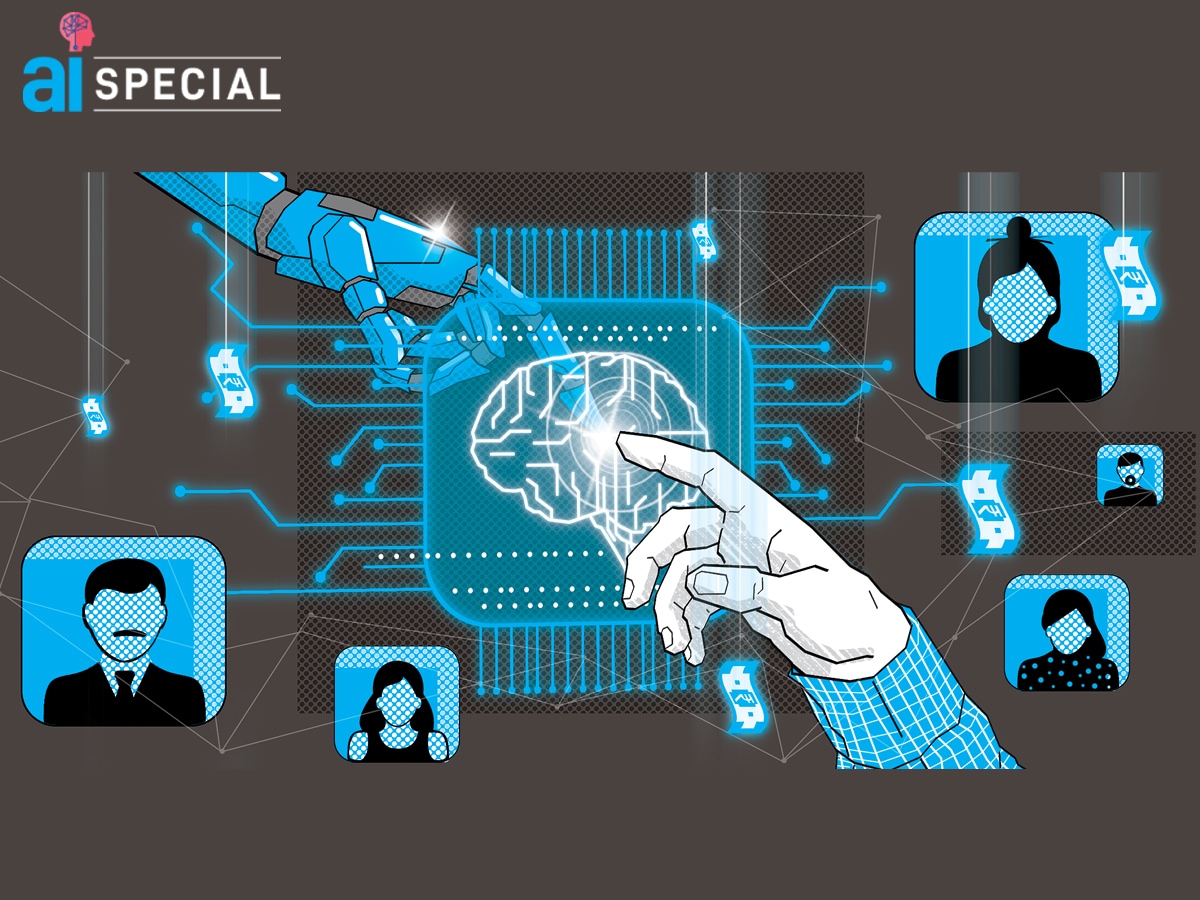From Gen to Jan: The possible 'third path' for India
Given its prowess in IT, and the success of Aadhaar, India should consider building GenAI as a digital public good, Jaspreet Bindra, the founder of AI&Beyond and author of 'Tech Whisperer', writes
 Human resource departments will need to adjust to including AI in their workforce, as humans work with AI as a co-pilot.
Illustration: Chaitanya Dinesh Surpur
Human resource departments will need to adjust to including AI in their workforce, as humans work with AI as a co-pilot.
Illustration: Chaitanya Dinesh Surpur
It has been almost two years since the ChatGPT launch sparked a frenzy in the technology and business world. While the brouhaha has died down a little bit, the world-changing promise of GenAI (generative artificial intelligence), and AI (artificial intelligence) overall, remains. “AI is not just a technology or a trend,” says Gartner, “it is a profound shift in how humans and machines interact.” This profound shift will reshape our businesses, economies, society, and, perhaps, humanity itself.
Businesses will need to start working with AI agents, as software-as-a-service (SaaS) transitions to AI agents-led service-as-a-software (the ‘New SaaS’). Human resource departments will need to adjust to including AI in their workforce, as humans work with AI as a co-pilot. Agents will become the new platforms, replacing ubiquitous apps, and AI-led voice will become the new user interface creating a new spike in human-machine productivity. AI is the new frontier for countries and an arms-race has begun to take leadership in this new age. Obviously, questions around ethics abound, with AI safety, privacy, deepfakes, surveillance, and environmental degradation fears playing on the minds of citizens and regulators aside.
AI is also shaping geopolitics, with the two leaders in the field, US and China, pulling ahead of other countries in developing and implementing AI. Each of these big powers is playing a different game: Big Tech is leading the charge in the US with laissez faire regulation, and the Chinese state and party is creating its own GenAI models built with informational and contextual safeguards. Other large geographies are carving out their own space, albeit in a comparatively more limited way: The European Union (EU) is focusing on regulation with the EU AI Act and the UK aims to lead the world through the Bletchley Park Global AI conference.
In this melee, where should India stand and carve out its own path? The country has undeniable technological chops. Its 6 million developers power the development centres of every Big Tech firm, the global capability centres of one of every four Fortune 500 firms, more than 100,000 startups and, above all, its world-beating IT services firms, contributing to about $200 billion of software exports. Specifically in AI, there are some green shoots, with 6,000+ AI startups, of which 340 with more than $1.5 million funding, and the government supporting it with the National AI Mission, among other initiatives.
But is it too little too late? India does not have a sovereign large language model (LLM) yet, with even countries like the UAE forging a lead here. Startup funding activity is still comparatively muted: Its highest-funded AI startup, Sarvam AI, raised $41 million as Safe Super Intelligence by Ilya Sutskever pulled in $1 billion in September as its ‘seed’ fund! Even the 10,000 GPUs (graphics processing units) of the National AI Mission are dwarfed by just Meta’s 600,000.
(This story appears in the 04 October, 2024 issue of Forbes India. To visit our Archives, click here.)

















